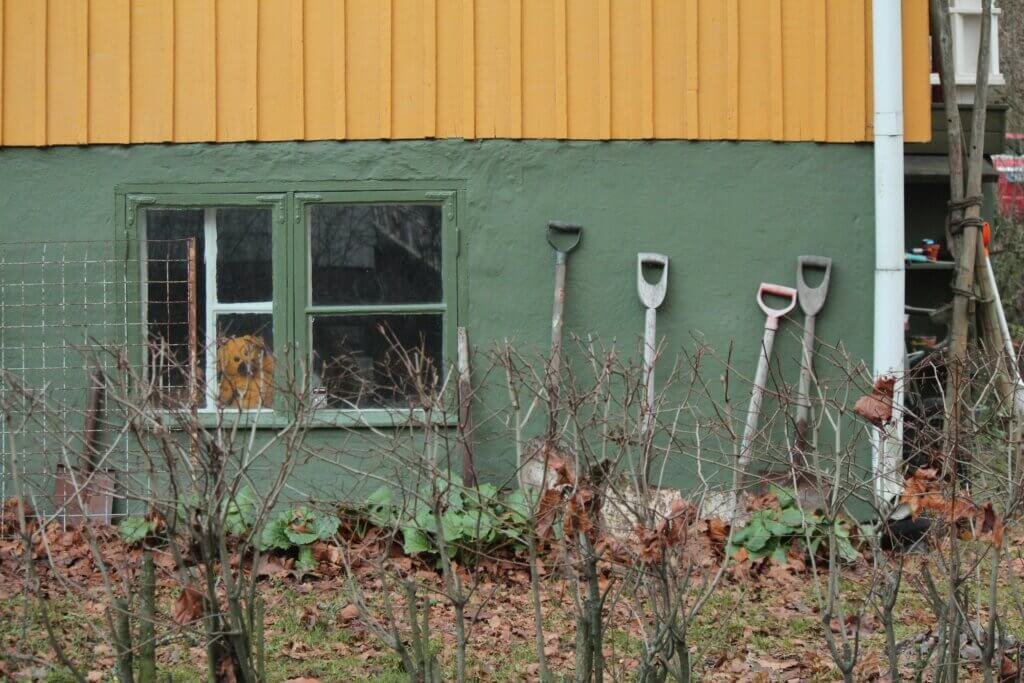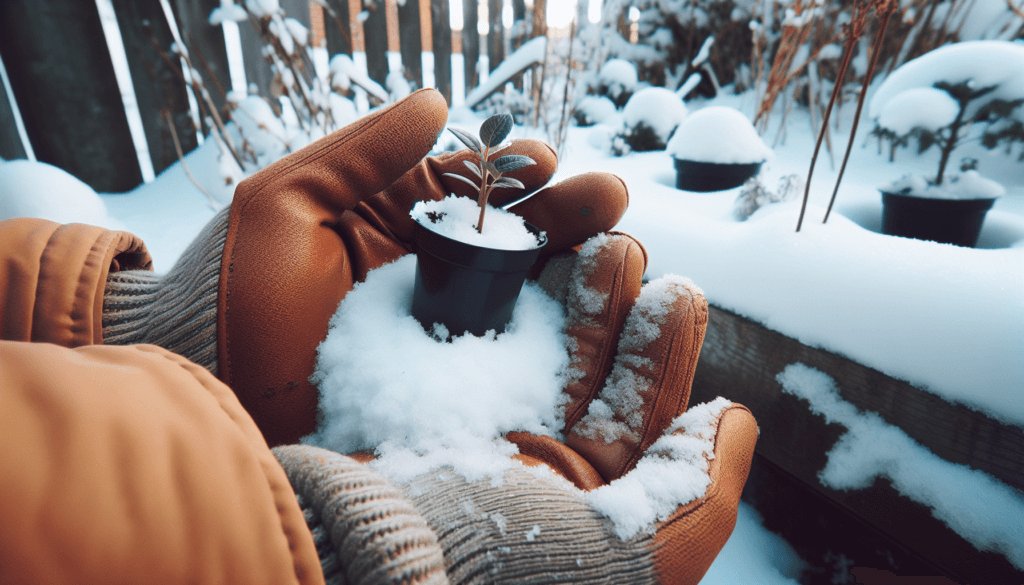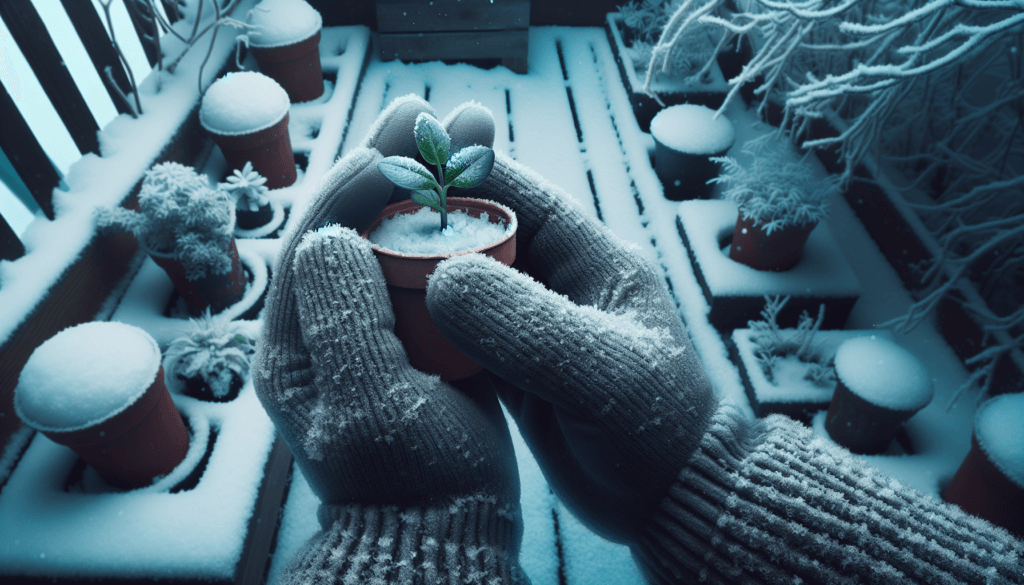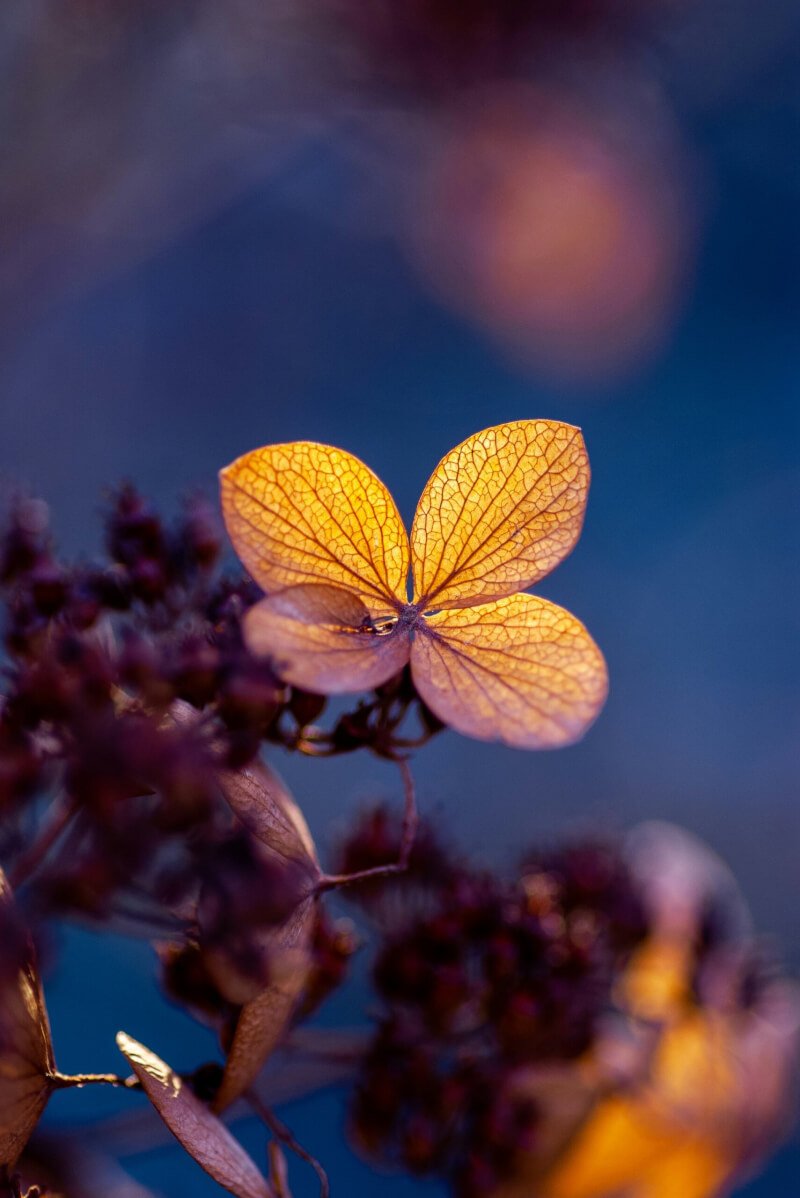Are you an urban gardener looking to keep your plants thriving during the winter months? Look no further! In this article, we will share with you the top 5 winter gardening tips specifically designed for urban gardeners. Whether you have a small balcony garden or a rooftop oasis, these tips will help you maintain and nurture your plants throughout the chilly season. Don’t let winter discourage your green thumb – with these helpful tips, you’ll be able to enjoy a flourishing garden all year round.

Choosing the Right Plants for Winter Gardening
When it comes to winter gardening, the first step is to choose the right plants that can thrive in colder temperatures. Opting for cold-hardy plant varieties is essential for a successful winter garden. These plants have the ability to withstand freezing temperatures and still thrive. Some popular choices for cold-hardy plants include kale, collard greens, Brussels sprouts, and winter lettuce. These plants are not only able to withstand the cold, but they also provide you with fresh and nutritious produce throughout the winter months.
In addition to cold-hardy varieties, it’s also important to choose plants that can withstand low light conditions. During the winter months, the days are shorter, and sunlight may be limited. Look for plants that are known for their ability to grow in low light environments. Some examples of low light-tolerant plants include snake plants, pothos, and ZZ plants. These plants can add a touch of greenery to your indoor space and still thrive even with limited sunlight.
Another factor to consider when choosing plants for winter gardening is their growing season. Opting for plants with a shorter growing season is advantageous in colder climates. These plants are able to mature and produce a harvest before the harshest winter conditions arrive. Some examples of short-season plants include radishes, spinach, and snow peas. By selecting plants with a short growing season, you can enjoy fresh produce even in the midst of winter.
Preparing the Soil for Winter Gardening
Preparing the soil is a crucial step in ensuring the success of your winter garden. Start by clearing out any debris or dead plants from the previous season. This will help prevent disease and pests from lingering in the soil.
Next, it’s important to amend the soil to improve its drainage. Winter rains can lead to waterlogged soil, which can be detrimental to plant health. Incorporating organic matter such as compost or well-rotted manure into the soil will help improve its drainage properties. This will ensure that excess water can drain away from the roots of your plants, preventing root rot and other issues caused by waterlogged soil.
Adding organic matter to enrich the soil is another vital step in preparing for winter gardening. Organic matter helps improve soil fertility and structure, providing essential nutrients to your plants. You can add compost, leaf mold, or well-rotted manure to the soil to enhance its nutrient content. This will help create a healthy environment for your plants to grow and thrive during the winter season.

Providing Adequate Protection for Plants
Giving your plants adequate protection is crucial for their survival during the winter months. One way to provide insulation to the soil is by using mulch. Mulching helps regulate soil temperature, preventing rapid temperature fluctuations that can negatively impact plant roots. Apply a layer of mulch around the base of your plants to keep the soil warmer and protect the roots from freezing temperatures.
Installing protective barriers or covers is another effective method of safeguarding your plants. You can use row covers or frost blankets to shield your plants from harsh winds, frost, and even heavy snowfall. These covers create a microclimate around your plants, providing insulation and protection from extreme weather conditions. Make sure to securely anchor the covers to prevent them from blowing away.
Creating microclimates using tools like cloches or cold frames can also offer additional protection for your plants. Cloches are essentially miniature greenhouses that can be placed over individual plants, while cold frames are larger structures that can accommodate multiple plants. These structures help trap heat and create a sheltered environment for your plants, allowing them to thrive even in colder temperatures.
Managing Watering and Moisture Levels
Proper watering and moisture management are essential for the health of your plants during winter gardening. Before the first freeze, it’s important to water your plants deeply. Deep watering ensures that the roots are well-hydrated and can withstand the dry conditions of winter. Watering deeply also helps prevent the soil from freezing, which can be harmful to plant roots.
Monitoring soil moisture levels regularly is crucial during winter gardening. It’s important to find the right balance between keeping the soil moist and avoiding overwatering. Use a moisture meter or simply check the soil with your finger to determine if watering is necessary. As a general rule, water your plants when the top inch of soil feels dry. This will help prevent both underwatering and overwatering, which can lead to root rot and other issues.
During the dormant period of winter, it’s important to avoid overwatering. Many plants go into a state of dormancy during this time, and their water requirements are significantly reduced. Overwatering can lead to waterlogged soil, which can cause root rot and other problems. Be mindful of your plants’ water needs and adjust your watering schedule accordingly.

Implementing Proper Winter Pruning Techniques
Winter pruning plays a crucial role in maintaining the health and appearance of your plants. However, it’s important to follow proper pruning techniques to avoid damaging your plants during the winter months.
Start by removing any dead or damaged branches from your plants. These branches are not only unsightly but can also attract pests and diseases. Removing them will help improve the overall health and aesthetics of your plants.
Pruning to maintain the plant’s shape and structure is another essential step in winter gardening. Trim back any overgrown or unruly branches to promote a more compact and balanced growth. This will not only improve the appearance of your plants but also maintain their overall health and vigor.
Avoid heavy pruning during winter, as it can stimulate new growth that is vulnerable to frost damage. Winter pruning should be minimal and focused on removing dead or damaged wood. Save major pruning for the spring when plants are actively growing and better able to recover from the pruning process.
Protecting Container Plants
If you have potted plants in your winter garden, it’s important to take extra precautions to protect them from the harsh winter conditions. One of the easiest ways to protect container plants is by moving them to a sheltered location. Look for a spot that provides some protection from the wind and extreme cold. This could be a covered patio, a garage, or even indoors near a sunny window.
Insulating containers with materials like bubble wrap or blankets can provide an extra layer of protection against freezing temperatures. Wrap the containers with the insulating material, making sure to cover the sides and bottom thoroughly. This will help retain the heat within the pot, keeping the plant’s roots warmer.
Avoid placing pots directly on cold surfaces such as concrete or stone. These materials can absorb and radiate cold temperatures, potentially damaging the plant’s roots. Instead, elevate the pots on pot feet or place them on a layer of mulch to provide insulation and prevent direct contact with cold surfaces.

Utilizing Season Extension Techniques
To maximize your winter gardening efforts, consider employing season extension techniques. These techniques help extend the growing season and enable you to enjoy fresh produce even during colder months.
Using row covers or frost blankets is a common method of protecting plants and extending the growing season. These covers provide insulation and protection from frost and cold winds. They can be draped over raised beds or directly over individual plants, creating a protective barrier.
Installing cold frames or hoop houses is another effective way to extend the growing season. Cold frames are essentially mini-greenhouses that provide a controlled environment for your plants. Hoop houses are larger structures that can accommodate more plants. These structures trap heat and create a warmer microclimate, allowing you to grow a wider range of crops throughout the winter months.
Employing heat sources like space heaters or heat lamps can also help create a more favorable environment for your plants. These heat sources can be used in conjunction with cold frames or hoop houses to maintain a stable temperature. However, it’s important to exercise caution when using heat sources and ensure proper ventilation to prevent overheating or fire hazards.
Monitoring and Addressing Pest Issues
Monitoring your plants regularly for signs of pests is crucial during winter gardening. Pests, although less active during the colder months, can still pose a threat to the health of your plants. Inspect the leaves, stems, and soil for any signs of pests such as aphids, mites, or slugs. Early detection allows you to address pest issues before they escalate.
Implementing natural pest control methods is advisable, especially during winter gardening. Avoid using harsh chemicals that can harm beneficial insects and disrupt the natural balance of your garden. Instead, consider using organic pest control methods such as neem oil or introducing natural predators like ladybugs or nematodes.
By maintaining a healthy and balanced garden ecosystem, you can minimize pest issues and promote the overall health of your plants.

Taking Care of Indoor Plants
Indoor plants require special attention during the winter months when they are confined to indoor spaces. Providing adequate sunlight or artificial light is essential for the well-being of your indoor plants. Place them near a south-facing window where they can receive maximum sunlight. If natural light is limited, supplement with artificial grow lights to ensure that your plants receive the necessary light energy.
Monitoring indoor humidity levels is important, especially during the dry winter months when the air tends to be drier. Indoor heating can further exacerbate the dry conditions. Increase humidity levels by misting your plants with water or placing a humidifier nearby. This will help prevent your plants from suffering from dry air-related issues such as leaf browning or wilting.
Avoid overwatering your indoor plants and ensure proper drainage to prevent waterlogged soil. During winter, plants may require less frequent watering due to reduced growth and lower water requirements. Allow the top inch of soil to dry out before watering and ensure that excess water can drain away freely. This will help prevent root rot and other issues caused by overwatering.
Planning for Early Spring Planting
While winter gardening focuses on growing and maintaining plants during the colder months, it’s also important to plan ahead for early spring planting. Starting seeds indoors allows you to get a head start on the growing season and ensure a bountiful harvest in the spring.
Begin by starting seeds indoors for early spring planting. Research the specific requirements of each plant and sow the seeds accordingly. Use seed-starting trays or containers filled with a well-draining potting mix. Provide the seeds with adequate light and maintain proper moisture levels to ensure successful germination.
Prepare garden beds in advance for early spring planting. Clear out any remaining debris, amend the soil, and remove any winter mulch. Adding compost or organic matter at this stage will help enrich the soil and provide essential nutrients for your spring plants.
Consider cold-tolerant vegetables for early planting. Cold-tolerant crops such as peas, carrots, and lettuce can be sown outdoors as soon as the soil can be worked in early spring. These crops are able to withstand cooler temperatures and can be harvested earlier in the season, giving you a fresh supply of homegrown produce.
By planning ahead and preparing for early spring planting, you can make the most of your winter gardening efforts and ensure a successful transition into the spring season.
In conclusion, winter gardening presents unique challenges and opportunities for urban gardeners. By choosing the right plants, preparing the soil, providing adequate protection, managing watering and moisture levels, implementing proper pruning techniques, protecting container plants, utilizing season extension techniques, monitoring and addressing pest issues, taking care of indoor plants, and planning for early spring planting, you can enjoy a thriving winter garden. So embrace the joys of winter gardening and reap the rewards of fresh produce and greenery even in the midst of colder temperatures. Happy gardening!


